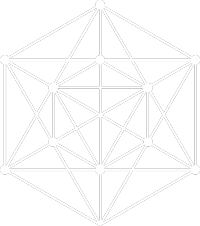PRP hair restoration is a natural, autologous treatment for hair restoration. This treatment involves using platelet-rich plasmas (PRPs) to facilitate hair regrowth and reverse the effects of alopecia. Hair is a marker of beauty, and the gradual loss of hair causes significant anxiety and self-esteem issues. We provide the highly-personalized PRP hair restoration to awaken your dormant hair follicles and stimulate hair regrowth, helping you achieve a dense and luscious head of hair.
About PRP Hair Restoration
PRP Hair Restoration Treats:
- Female pattern baldness
- Male pattern baldness
- Thinning hair
- Receding hairline
- Bald patches on the scalp


Advantages of PRP Hair Restoration:
- Non-surgical hair restoration
- Autologous treatment based on components drawn from your blood
- No risk of infections or allergies
- Painless and comfortable treatment
- Minimal post-treatment redness, swelling, and discomfort
- Stimulate natural hair regrowth
- Stops the progression of alopecia
- Improve hair density and strength
- Concludes within 30 minutes
- No downtime
How Does PRP Hair Restoration Work?
To understand how PRP hair restoration works, you must understand the basics of PRP. Platelet-rich plasma (PRP) is a concentrated serum drawn from a small sample of your blood. It contains a high concentration of growth factors, the components responsible for most of the growth processes and healing activities in your body, such as cellular regeneration, blood clotting, tissue healing, and collagen production. Since it’s drawn from your body, there’s no risk of an infection or allergic reaction.
Hair loss and thinning hair usually occur because some of the hair follicles in your scalp become dormant, i.e., they can’t progress through the natural cycles of hair growth. When PRP is injected into the scalp, it stimulates the production of new stem cells in the roots of the dormant hair follicles. PRP also facilitates the formation of new blood vessels and improves blood circulation to the scalp, which essentially awakens the dormant hair follicles, reversing the effects of alopecia.
Candidates for PRP Hair Restoration:
- Are experiencing the early stages of alopecia
- Want to stop hair loss in its track
- Want natural, non-invasive techniques to stop hair loss
- Are physically and mentally healthy
- Don’t have underlying medical conditions that preclude treatment
- Have realistic expectations from the procedure
- Don’t have a history of blood disorders or diseases
The PRP Hair Restoration Process
PRP hair restoration is a simple, in-office procedure. The medical provider draws a small sample of your blood from your arm via a syringe. The blood sample is spun in a centrifuge to isolate the golden-colored PRP, which rises to the top of the vial. The medical provider marks the targeted treatment areas on your scalp and applies a numbing gel. Finally, the PRP serum is carefully injected into your scalp, where it stimulates hair regrowth.
Side Effects & Downtime
PRP hair restoration may cause mild post-treatment redness, swelling, irritation, and bruising around the treatment areas. These side effects are common to all injectable treatments. There is no downtime, so you can resume your daily routine immediately after the treatment. You can also resume showering.
Results: Onset & Longevity
Most patients notice improvements in their hair density and strength a few months after the first treatment. You may need a series of 3 to 4 sessions spaced a month apart for optimal results. After the first round of treatments, you may need 1 or 2 maintenance treatments per year.

Why Choose Evolve MD?
Evolve MD Modern Med Spa is the premier boutique med spa specializing in non-surgical hair restoration and aesthetic treatments in Port Orange. Our medical providers believe in holistic treatments that improve your cosmetic health while promoting overall wellness. We love the PRP hair restoration technique because it’s based on natural substances derived from your body, making it completely safe. If you want to reverse the effects of hair loss, please schedule an appointment today.

